------------
A Tête-à-Tête with a sought-after decor:
Refinement and preciousness are at the rendezvous in this exquisite Tea or Coffee Service called "Tête à Tête" in hard enameled porcelain surrounded by a deep and intense purple-aubergine background illuminated with gold bands festooned with small painted ornamental motifs (friezes alternating bases of whorls, stylized florets and clovers, festoons, palmettes and whorls, chevrons, rosette with quatrefoil flower...) or in fine relief (palmettes, fleurons and acanthus interlacing, foliage scrolls, Greek, ..) executed in polished burnished gold.
Within this delicate guimpure weighted with gold threads, takes place, on each of the pieces of this porcelain set, a polychrome medallion in muted or shimmering tones enhanced by the luster of dazzling colors. Annotated in their decorations, these show, in the form of circular chalkboards, compositions with alternately biblical or legendary subjects designed after paintings by Old Masters from the 17th century in Europe (Adrien Van der Werff, Giovanni Francesco Barbieri, known as Le Guerchin) preserved today in prestigious museum institutions.
Complete with porcelain pieces deliciously suitable for gourmet dinner intermissions, our “Tête à Tête” consists of:
- a presentation tray. Raised on a small heel, this one, hemmed on the edge of its circular shape wisely softened with a gold net, presents on its basin with a purple background a wide gold band with luxuriant decoration in burnished gold of palmettes - fleurons of Acanthus foliage surrounded by friezes with alternating sprite motifs of flowered scrolls, festoons and stylized flowers. Set with a serrated listel of small bases and turns, a large medallion with lively polychromy enlivens the center of the tray. Annotated in italics "A.vd. Werff." (for Adrien Van der Werff, 1659-1710), this miniaturized composition on a porcelain support takes up the canvas titled "The repudation of Hagar by Abraham" (1701, Gemaldgalerie in Dresden) due to the Dutch painter treating in his century one of the episodes of Book of Genesis (XXI). This biblical subject painting also adorns the Service's milk or cream pot.
-a covered jug. Topped on its conical lid with a frétel with a delicate motif of a foliage and openwork scroll - repeated on the equally gilded handle -, it displays on its scalloped base a coquettishly full-bodied shape. Adorned over its entire body with this feminine purple background covered in fine concentric gold patterns (listels, combed) or in friezes (including alternating chevrons of geometric patterns and stylized flowers), it is embellished within a large cartouche polylobed with a medallion annotated here "Giov.Francesso Barbieri". Framed with foliage scrolls, it partially depicts one of the pictorial compositions dedicated to the legendary warrior Queen of the Assyrian Empire who, betrayed by her sons, chose to metamorphose into a Dove: "Semiramis at his toilet learns of the revolt of the Babylonians" (1624, Boston, Museum of Fine Arts), by Giovanni Francesci Barbierini, known as Le Guerchin, 1594-1666) - Theme taken up on the background of one of the cups.
-a covered sugar bowl. Crowned, flanked by a catch, handles with golden foliage scrolls, decorated on its swollen body with ornamental motifs similar to those of the Poureuse, it has a medallion with soft poychrome. On the other hand, no annotation in the decor or on the entire piece allows us to identify the artist-painter author of this scene appearing seated in a princely architectural setting surrounded by exotic foliage, two Company ladies listening with delight to the notes played on a lute by their richly dressed Mistress. Probably one of the episodes linked to the legendary Queen of Babylon, motif adorning the second cup.
-a cream or milk jug. Boasting a spout fuller than that of the Poureuse, it matches with its shapes with flexible and undulating profiles as well as with its polychrome decoration (central medallion about the story of Hagar, progenitor of the children - Isaac and Ishmael- of Abraham chased into the desert following the jealousy of his wife, Sarah), his cartouche and ornamental motifs painted in fine gold to the other pieces of the Service.
-two cups. Resting on a circular foot, each cup surrounded by a purple background on their flared shape has on their external wall a frieze in fine Greek relief and, on their internal wall between two friezes with motifs identical to those adorning the Tray and the Jug , a wide gold band decorated with foliage scrolls. The bottom of their drink is embellished with small paintings depicting the female figure of Sémiramis. They have a golden foliage handle.
-and, their matching saucers. In a circular shape on a small heel, they repeat on their base wing, band and ornamental friezes from the inside of the cups. In their center, radiating motif of a quatrefoil flower and stylized florets.
As atypical as it is charming, this delicate porcelain Tête-à-Tête seduces with the elegance and softness of its feminine forms, the refinement of its chromaticism playing on the contrast of dazzling colors on a purple background jeweled with gold motifs of great ornamental fantasy. Freely borrowed from the porcelain pieces created by the Imperial and Royal Manufacture of Vienna from the Biedermeier era (1815-1848) until 1864 - the year of its definitive closure - its theme centered on "heroines" is biblical (the beautiful Agar of the Book of Genesis), or legendary (the audacious Semiramis) approached here through pictorial compositions due to two Great Masters of European painting of the 17th century relate to the cultural values of Viennese society of this period. Not without eclecticism, we mix with spirituality in pleasant domestic objects intended for a certain art of living, edifying subject and exoticism.
Probably made by porcelain factories or branches established in the Viennese capital (Manufacture of G.F. Schmilt, August Klein, MB Grosmann active during the years 1860-1890), our Tête-à-Tête comes from an appreciable collection particular must have been offered in the same way as these "sumptuous, artistic Articles of Vienna" (skin and fine leather goods, tablets, Bohemian crystals, bronzes, trinkets) sought after by "the prodigious and fashionable Parisian clientele" who regularly frequent the "store at Sardanalesque luxury" established in Paris at 6, Boulevard des Capucines (1867-1896) by the Maison Auguste Klein, of Vienna.
--------------------
End of porcelain work from a porcelain factory in Vienna. Last third of the 19th century.
Marks: on the reverse, printed in brown, striped shield of the Dukes of Austria - reversed and with numbered bars - of the Vienna Porcelain Manufacture surmounted by the Royal Crown of the Holy Empire of Austria.
Materials: polychrome hard porcelain with purple-aubergine background and bands with gold background; highlighted with fine painted gold or burnished and polished gold.
Dimensions: Tray: Diam: 31 cm; - Jug: H.: 18 cm; Sugar bowl: H.: 11 cm;- Cream pot: H.: 10 cm; -Cup: H.: 5cm; -Saucer: Diam.: 12.5 cm.
In a perfect state. Complete. No Flash. Original bright and bright colors. Note: small frictions to the gilding in the center of one of the saucers.


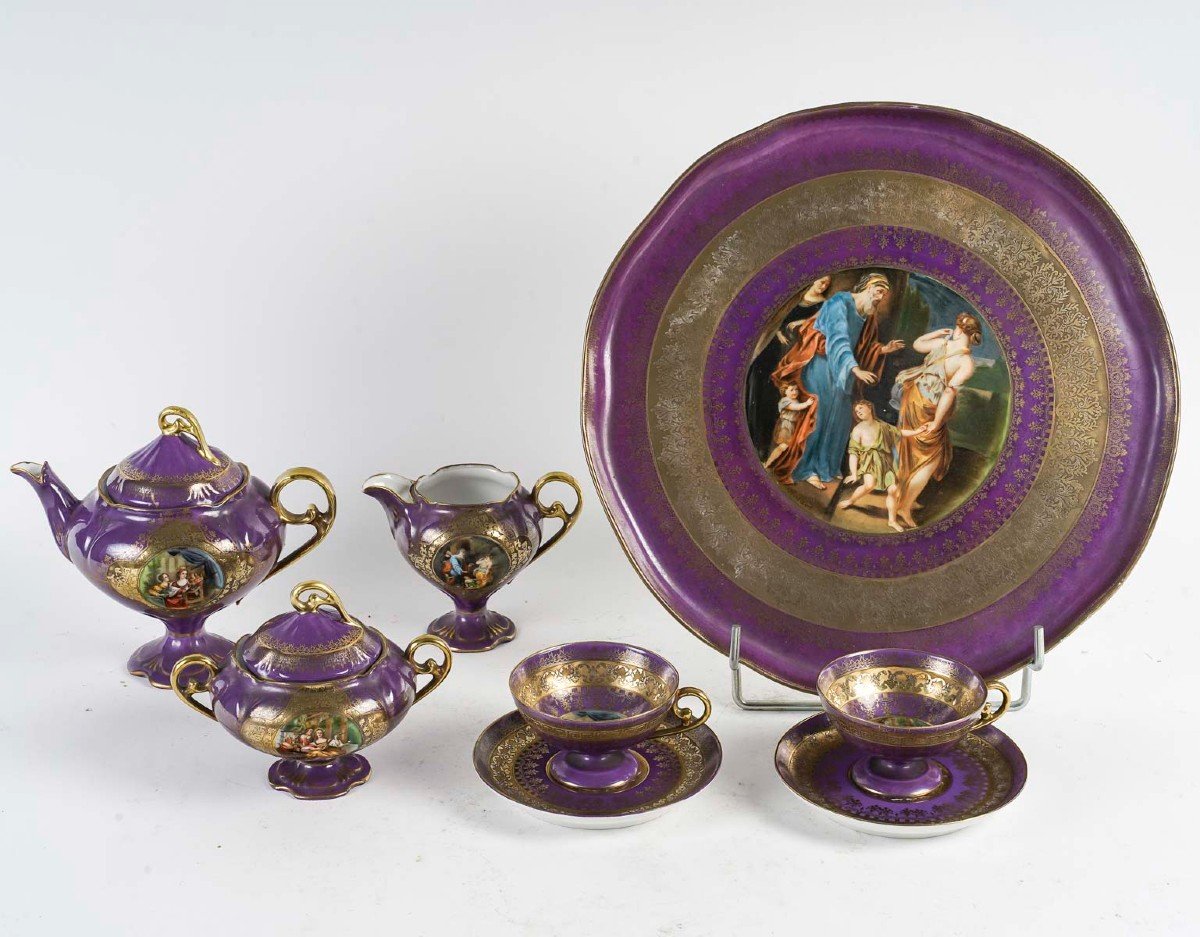
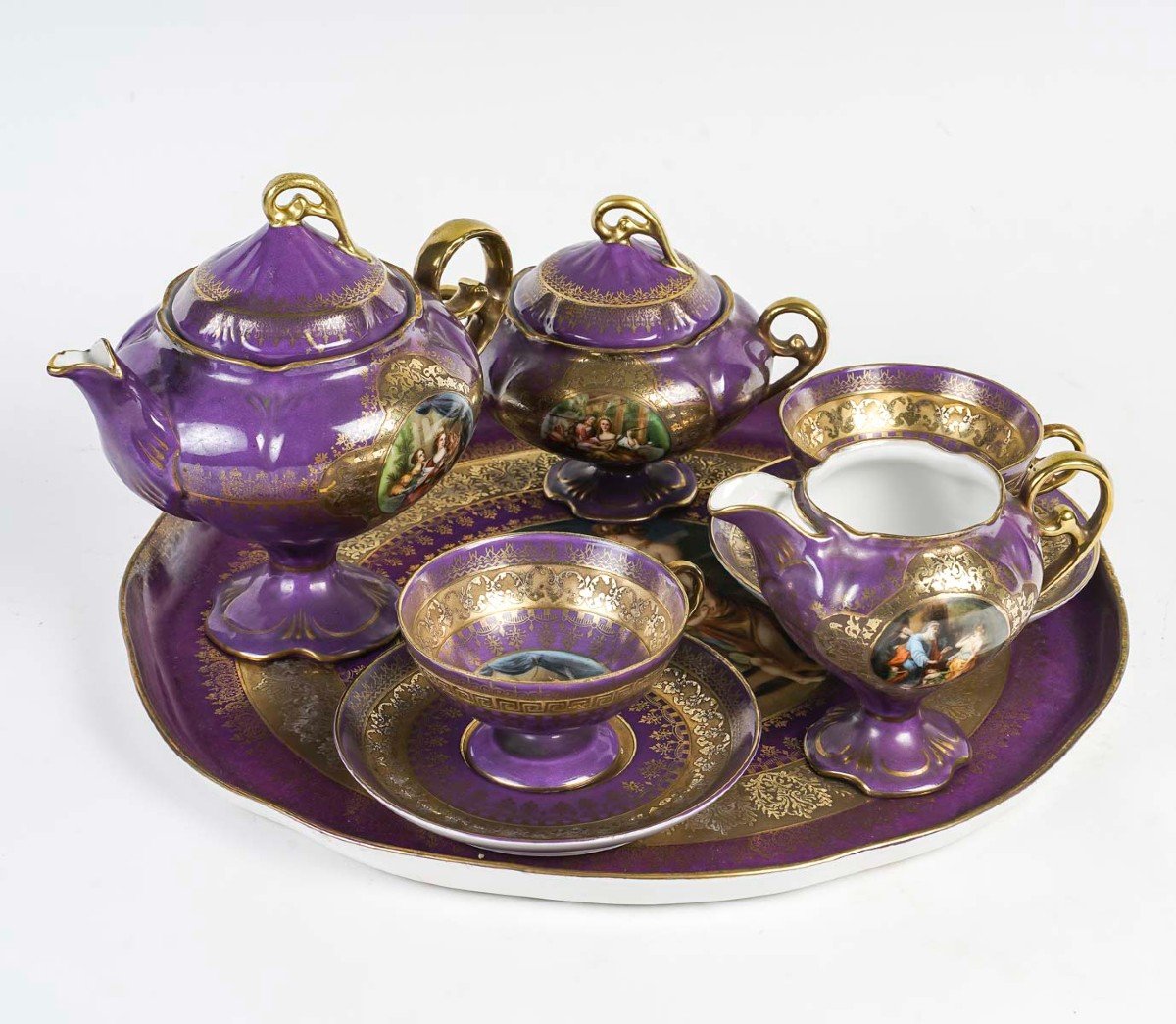
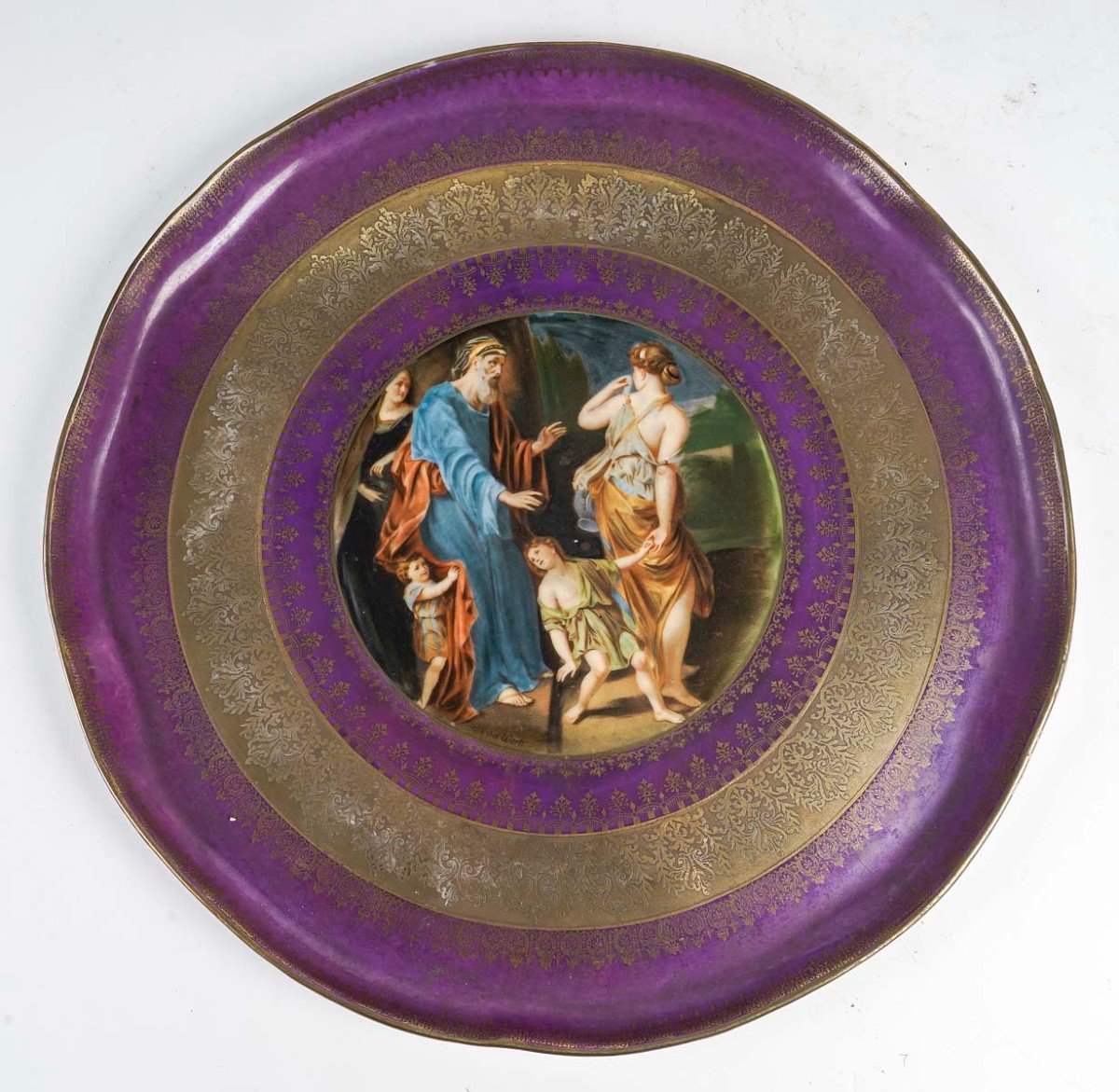
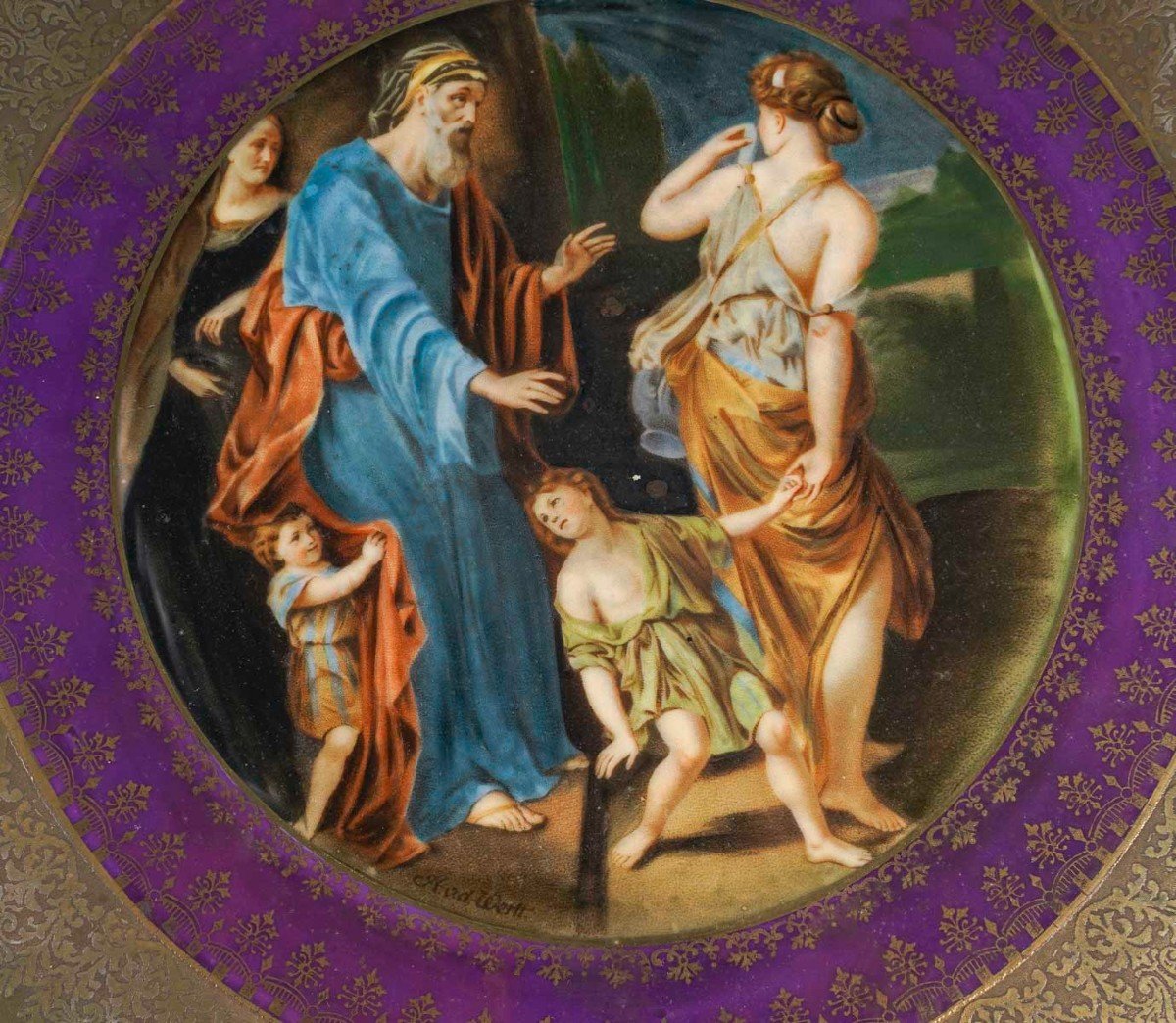

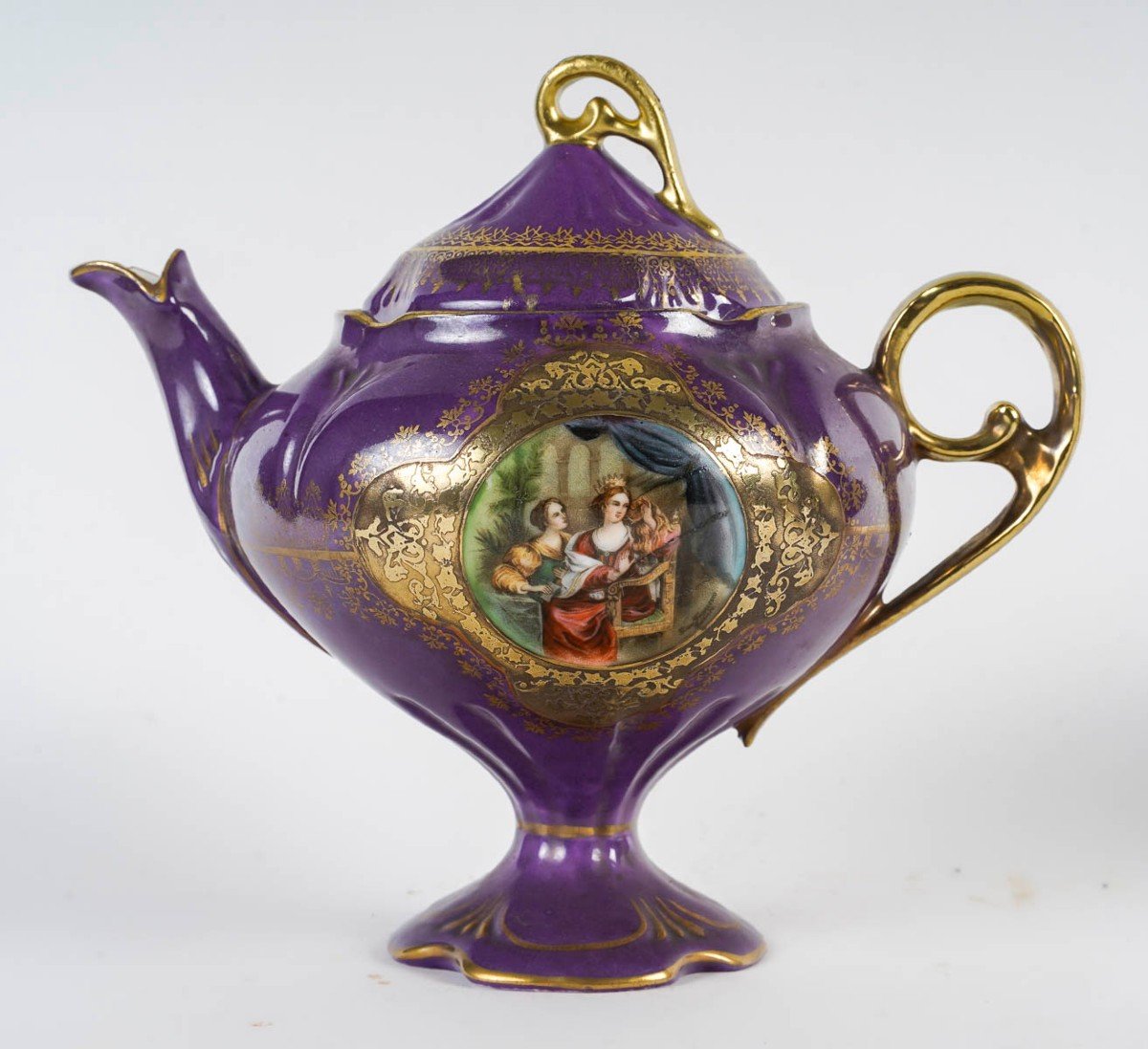
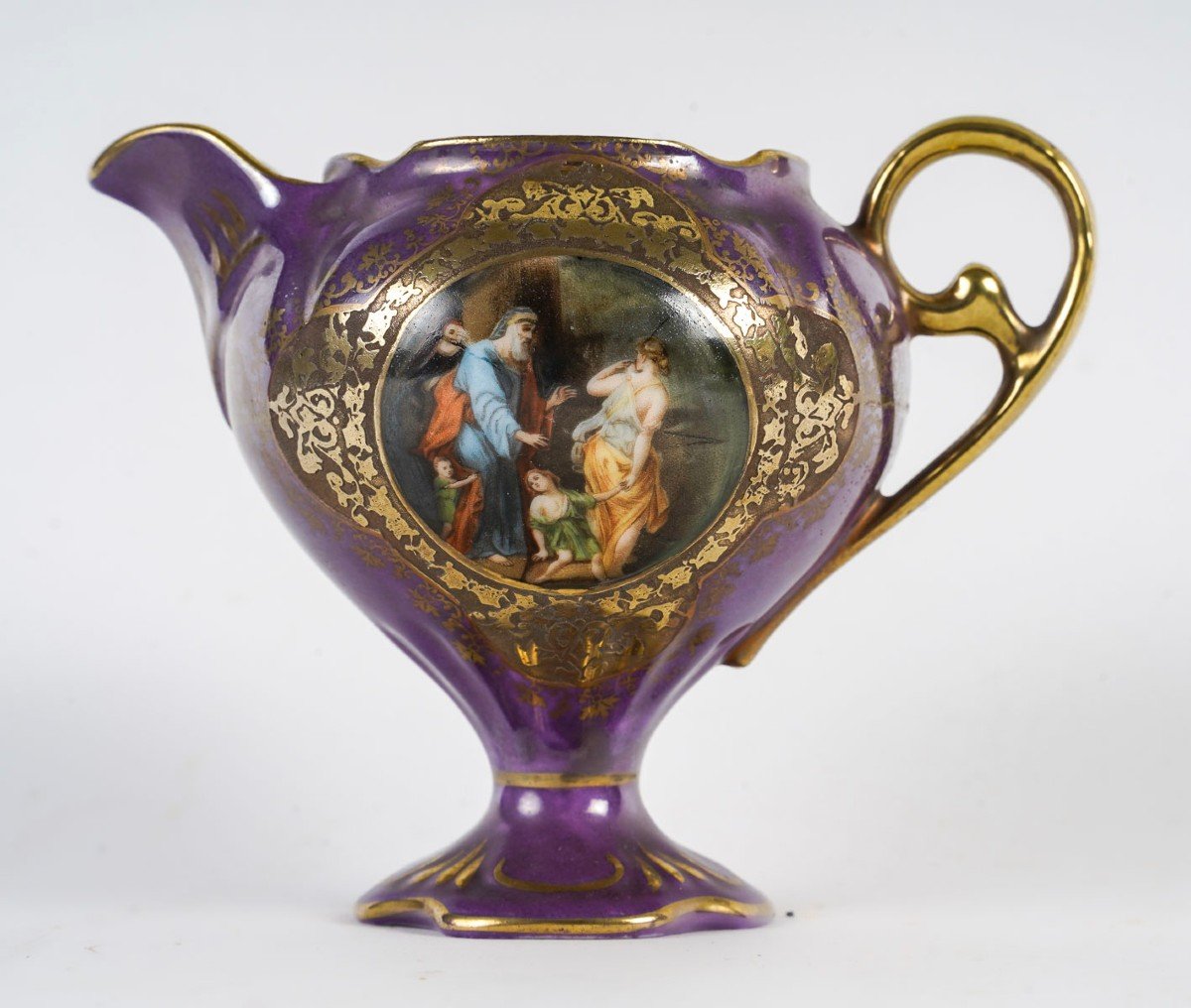
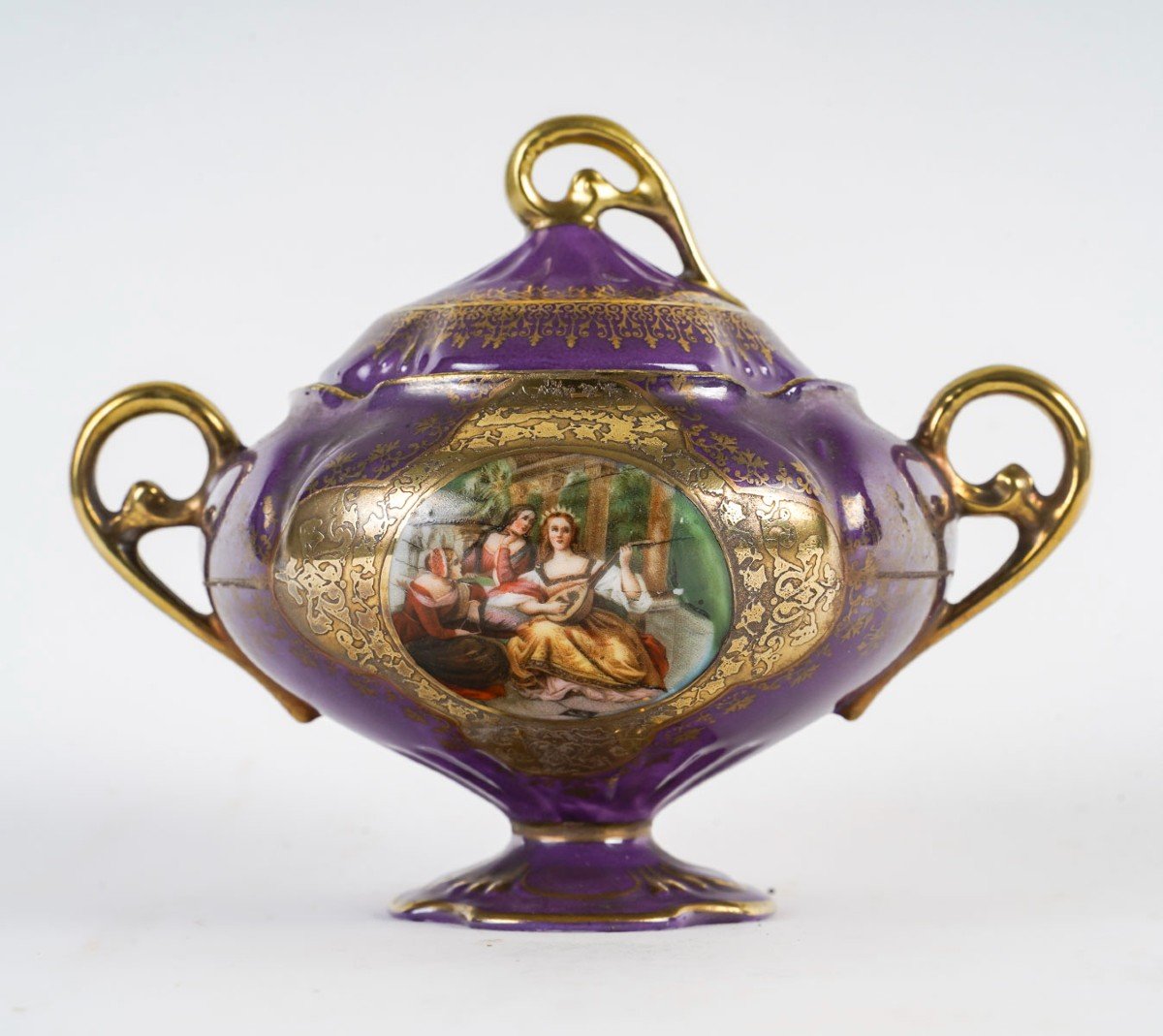

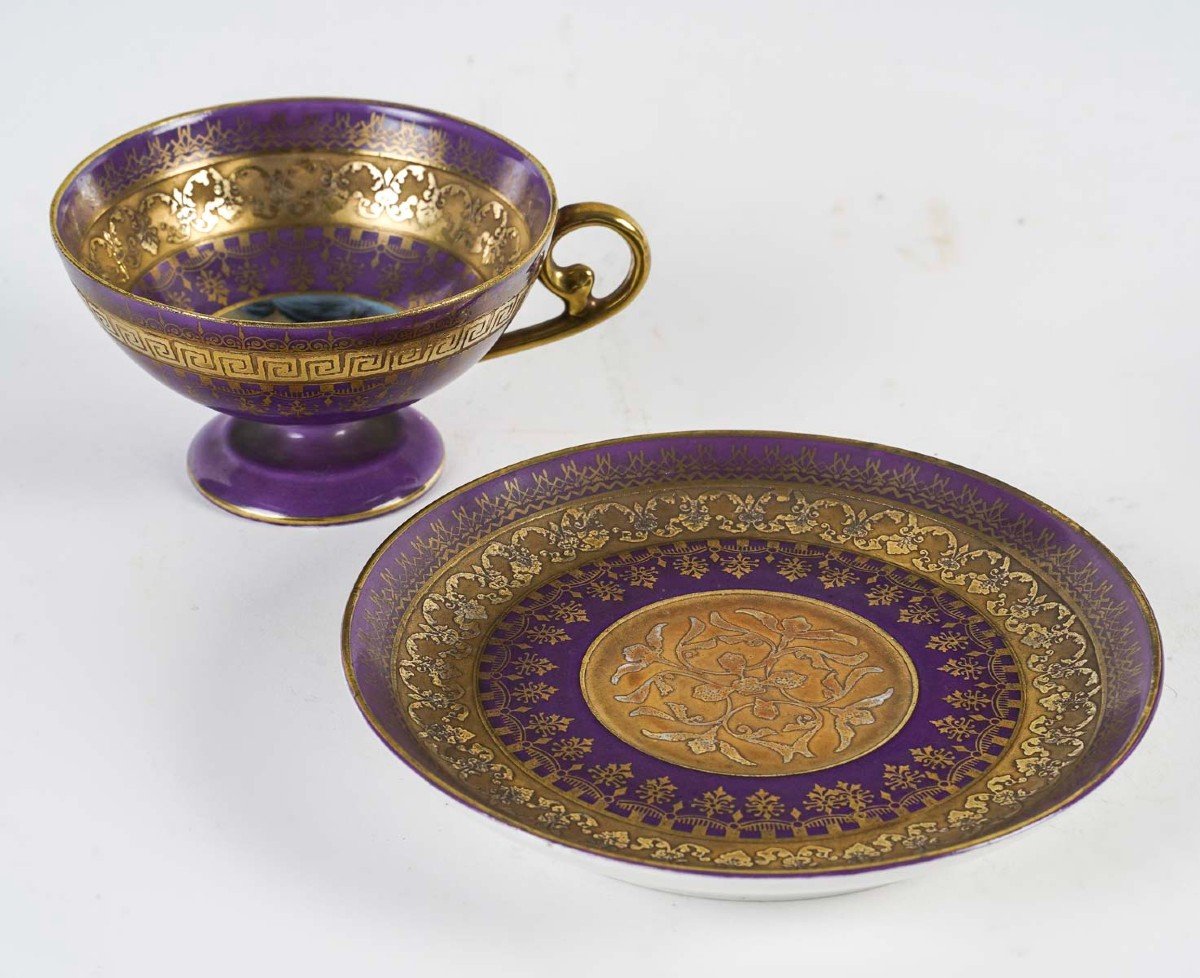
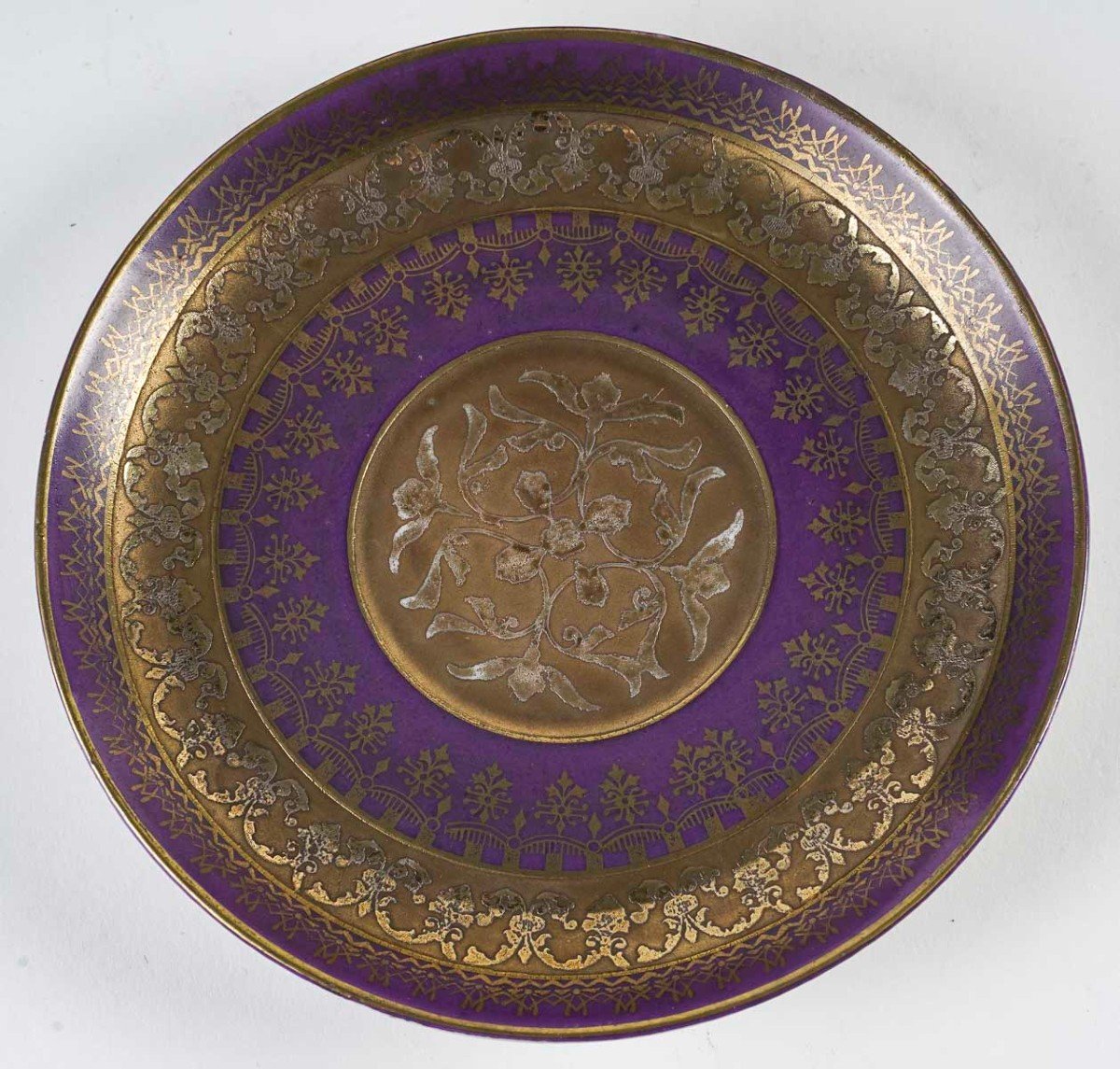
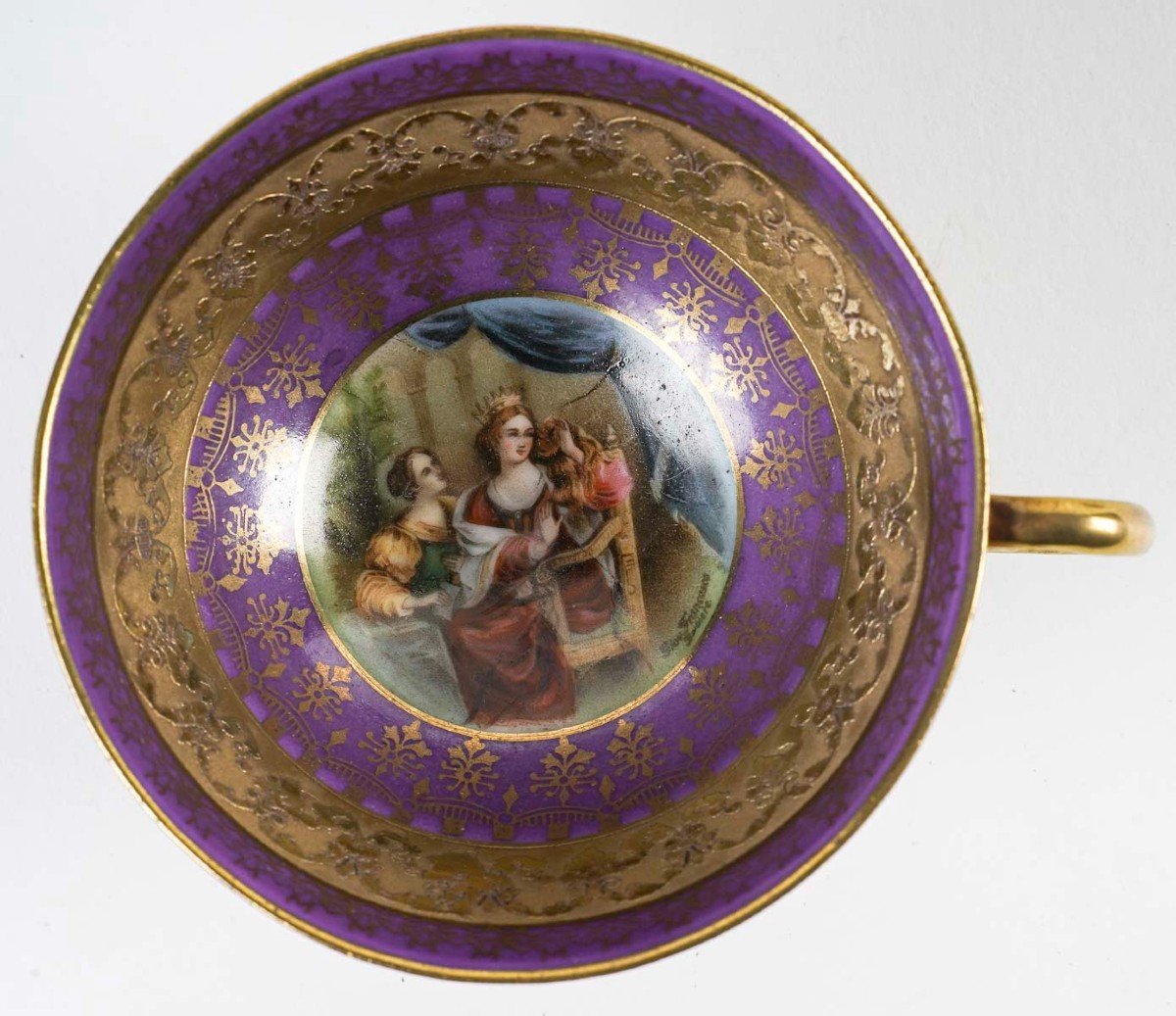



















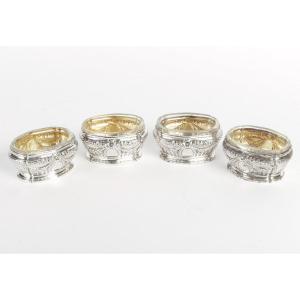


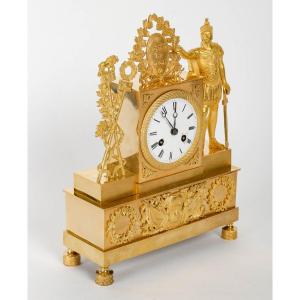
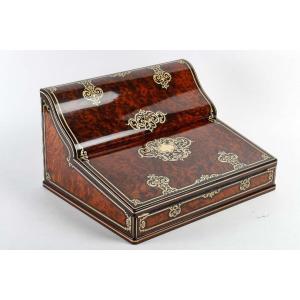

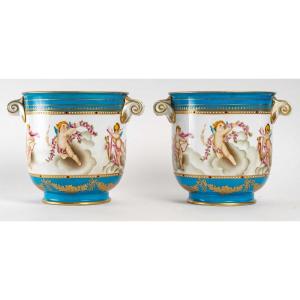

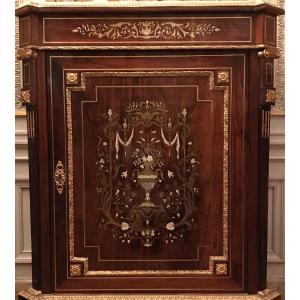



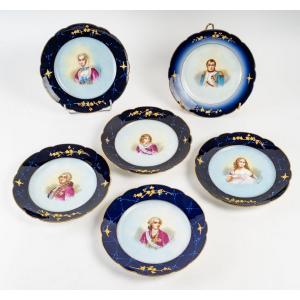




 Le Magazine de PROANTIC
Le Magazine de PROANTIC TRÉSORS Magazine
TRÉSORS Magazine Rivista Artiquariato
Rivista Artiquariato